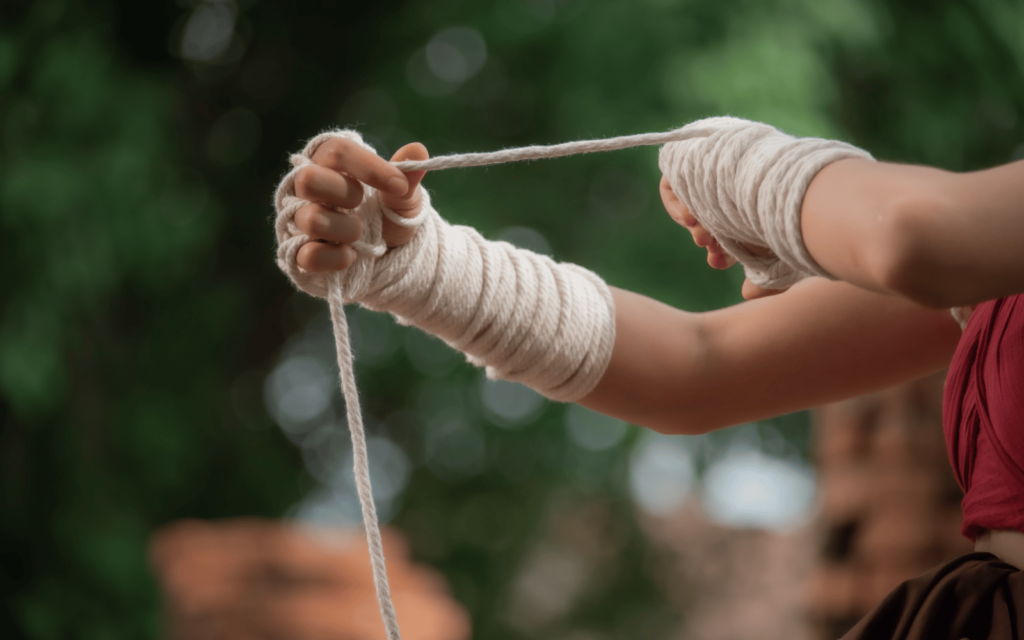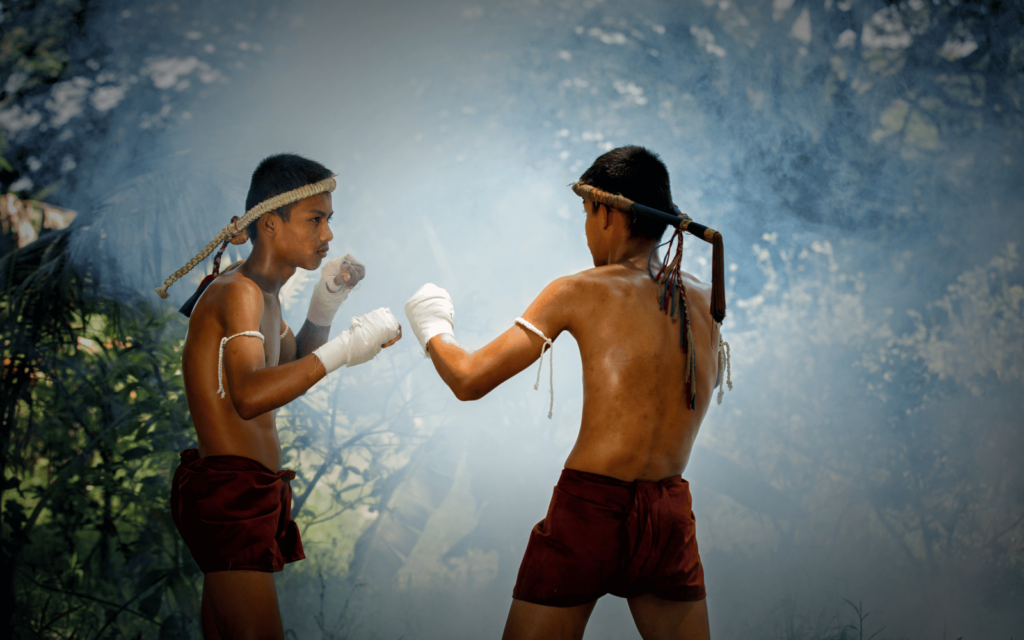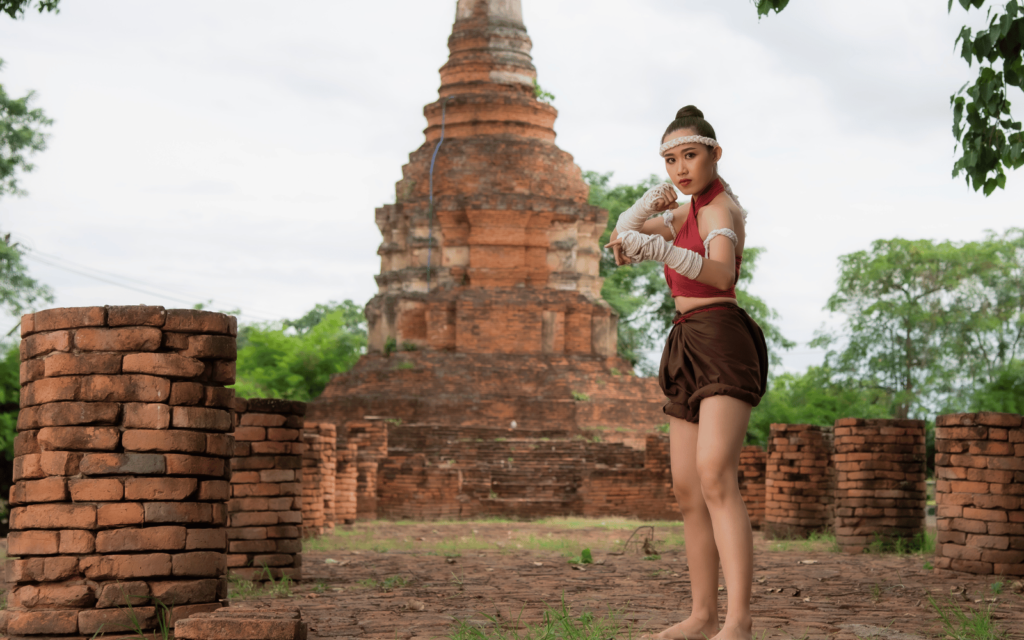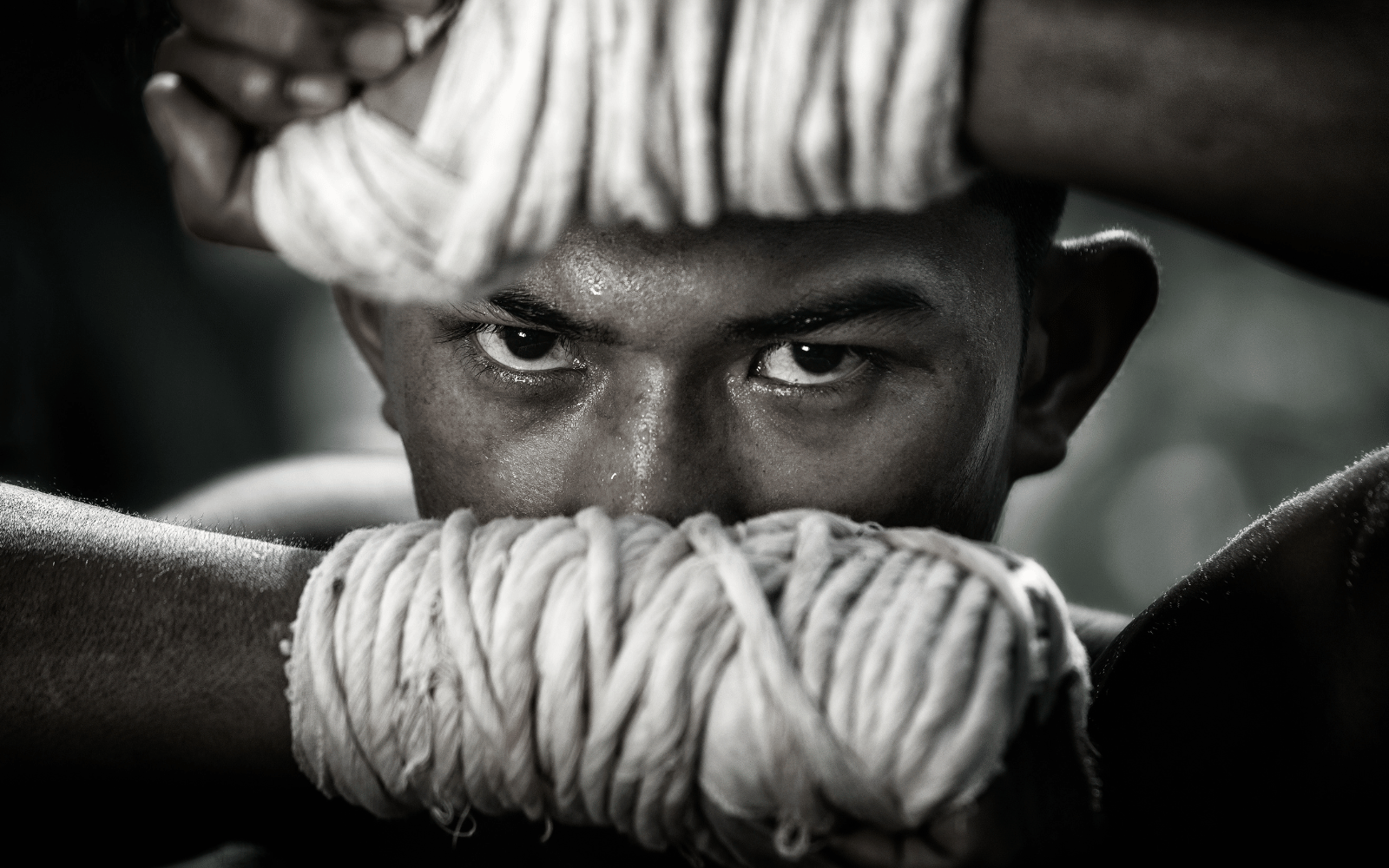Dive into the rich tapestry of Muay Thai, and you’ll discover the ancient boxing arts tradition of “Kard Chuek” – the art of binding hands with ropes.
Before the dawn of modern gloves, these ropes were not just protective gear but a symbol of Muay Thai’s raw and venerable roots.
And today, we’ll share a lot of info and wrap it up into a nice little fist.
- What are Kard Chuek / Muay Thai Ropes?
- What are Muay Thai Ropes Made Of?
- Why did Muay Thai Fighters Historically Wrap Their Hands with Ropes?
- What is Muay Kard Chuek?
- Why was Muay Kard Chuek Banned?
- How Long Should Muay Thai Ropes Be?
- Why do Muay Thai Fighters Wear Ropes on their Arms?
- Are There Different Ways to Wrap Muay Thai Ropes?
- Do Muay Thai Ropes Hurt More than Boxing Gloves?
- Wrapping Up Muay Thai Ropes
What are Kard Chuek / Muay Thai Ropes?
Muay Thai ropes, often called “Kard Chuek,” are hemp ropes with historical significance in Muay Thai.
When it was still called Muay Boran – before padded gloves came into the mix, Thai fighters wore Kard Chuek to protect their hands and wrists.
Due to its rough texture, though, as we’ll discuss below, these ropes would also inflict more damage on opponents.

For reference, Muay Boran is the style used in the classic Muay Thai movie, Ong-Bak.
What are Muay Thai Ropes Made Of?
As mentioned, Muay Thai ropes are made from hemp rope. Hemp is both lightweight and breathable.
And Thailand’s environment is a natural breeding ground for hemp.
It also happens to have natural properties that make it mold-resistant.
This is very important in such a humid climate and for use as ropes around sweaty hands and arms.
Why did Muay Thai Fighters Historically Wrap Their Hands with Ropes?
Wrapping the hands with ropes is an ancient tradition passed down through generations. And although it is not as commonly found as modern Muay Thai; it is seen as a way to help the sport keep the tradition alive.
There are several reasons why fighters would wrap their hands with ropes.
The first is that it provides extra padding for the knuckles to avoid injury from the impact of punches.
Secondly, it helps reduce any swelling in the hand after training sessions.
And thirdly, the coarseness of the hemp rope material would more easily cut opponents.
What is Muay Kard Chuek?
Muay Kard Chuek translates to rope-bound boxing in English.
It’s an ancient boxing alternative to European bare knuckle boxing.
Why was Muay Kard Chuek Banned?
Muay Thai’s evolution into its modern form with rules and gloves arguably started when Thai boxer Phae Lieng Prasert killed a Cambodian Khmer fighter during a contest in 1928.
Since the Cambodian fighter passed away shortly after the fight, it was deemed a brutal result of the Kard Chuek and thus boxing events would need to adopt more modern boxing gloves.
However, a promotion called ‘Thai Fight’ has brought back somewhat profited from a revival of Muay Kard Chuek.
How Long Should Muay Thai Ropes Be?
Typically, the ropes used for “Kard Chuek” were several meters long.
For demonstration or traditional purposes, it might be practical to have around 5-7+ meters of rope per hand, then adjust based on personal preferences and needs.
This length allowed fighters to wrap their hands and forearms, providing support and protection.
They would loop the rope around the wrist, traverse up to the base of the fingers, and then crisscross over the back of the hand and between the fingers, wrapping the entire fist and lower forearm.
But as we’ll see below, the wrapping style largely depends on the style of fighting found in that region.
Why do Muay Thai Fighters Wear Ropes on their Arms?
It’s essential to differentiate between “Kard Chuek” ropes and the “Pra Jiad”.

The Pra Jiad, sometimes worn in Thai fights, is a cloth armband, usually made from a piece of a loved one’s clothing, which is believed to bring good luck, protection, and spiritual power.
Fighters wear it on their upper arms during bouts.
Muay Thai, due to its Thai culture, is steeped in rituals.
Beyond just the ropes and armband, fighters also typically perform a Wai Khru Ram Muay, a dance ritual before fights, to pay respect to their trainers and ancestors.
Are There Different Ways to Wrap Muay Thai Ropes?
Different Muay Boran fighting styles evolved over time in Thailand, depending on the region.
Let’s discuss each below.
Muay Chaiya
Muay Chaiya is a balanced style of traditional Muay Boran known for its speed and precision.
It was created in the south of Thailand in the city of Chaiya and is arguably the most influential style of modern Muay Thai, despite its grappling fighting system.
The focus is on defense and countering, keeping a tight, defensive stance. This makes it a relatively safe and practical style in a traditional Thai fight.
And because of this diverse array of attacks, Kard Chuek wraps stay relatively low on the arm to ensure greater mobility for the various movements needed.
Muay Thasao
Muay ThaSao hails from Northern Thailand, in the Tha So region, and is a kick-focused style famous for its speed in countering.
Because of this kick-focus – typically, ropes are tied up the arm for extra protection when blocking.
Muay Korat
Muay Korat is a powerful and aggressive style from North-Eastern Thailand that mixes up heavy kicks and punches, knees, and even headbutts – reminiscent of Lethwei (check out how Lethwei vs Muay Thai compare for more context).
Typically Kard Chuek’s wrappings could be up to the elbow to help protect against these dangerous attacks.
Muay Lopburi
Muay Lopburi is another aggressive style. It originated in Central Thailand and is relatively boxing-focused, with many great boxing techniques.
These fighters would remain unpredictable with great footwork, an array of boxing techniques, and even jumping attacks.
But because of the emphasis on offense, fighters would usually wrap up to their forearm and below their elbow to allow for jumping elbow attacks.

Do Muay Thai Ropes Hurt More than Boxing Gloves?
Muay Thai ropes can lead to more superficial damage, like cuts and abrasions, than boxing gloves.
The rough texture of the ropes, when contrasted with the smooth surface of gloves, means that a strike from rope-wrapped hands is more likely to break the skin or cause scrapes.
A strike from a rope-wrapped hand might feel sharper or more “stinging” due to the smaller impact area and the roughness of the ropes.
Meanwhile, a punch from a boxing glove, especially one with thicker padding, will give a more “thudding” hit because of the broader impact and cushioning.
This helps to reduce the risk of concentrated trauma, such as cuts and superficial and bone injuries.
However, the distributed force can lead to internal injuries like concussions.
Wrapping Up Muay Thai Ropes
Kard Chuek, with its intricate rope wrappings, is a vivid reminder of Muay Thai’s deep history.
While the sport has evolved with time, embracing modern boxing equipment, the essence captured by these ropes persists, connecting today’s fighters to centuries of tradition and honor.
